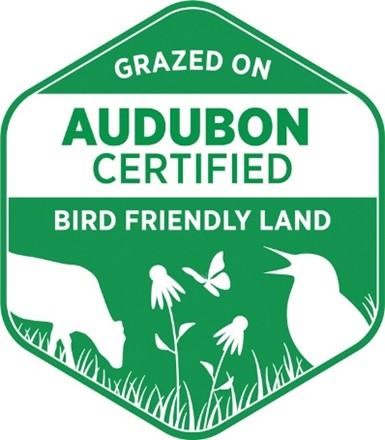Montana Ranches, An Enormous Opportunity For Conservation

Since the 1970s, North America has seen a more than 50% decline in grassland birds. Two of the species that have been reduced dramatically are the Chestnut-collared Longspur and the Bobolink. In response to the decline, the Montana Audubon Conservation Ranching Program (ACR) supports ranchers with good land stewardship (in the market and on the ranch) so that they continue to support bird habitat. Since 2019, we’ve enrolled approximately 110,230 acres across nine bird-friendly ranches across the state.
With only 40% of America’s Great Plains still intact, Montana ranches, with vast rangelands for livestock production, become pivotal in grassland bird conservation. Here are a few facts outlining the enormous scale of ranching in Montana:
- Montana is the 4th largest state in the US by area, comprising a total of 93.2 million acres. With 58.1 million acres in farms and ranches, 62% of Montana land is agricultural, ranking 2nd only behind Texas.
- The average Montana ranch is 2,156 acres, but can exceed 100,000 acres.
- With just over 1,000,000 human residents, cows outnumber people at 2.5 million head. Montana ranks 7th nationally in beef cattle production.

Courtesy of Montana National Heritage Program (MNHP)
Imagine if every Montana ranch was “bird-friendly”? Ideally, grassland birds – like the Chestnut-collared Longspur and the Bobolink – as well as other wildlife could find refuge in our state, and the ranching community could benefit from the increasing market demand for healthier beef.
Chestnut-collared Longspur

United States Fish and Wildlife Service (USFWS)–
Birds of Conservation Concern (2021) in Bird Conservation Regions (BCR):
- BCR 11 (Prairie Potholes)
- BCR 17 (Badlands and Prairies)
Montana Fish Wildlife & Parks (MFWP)–
Species of Greatest Conservation Need:
- Tier II (Moderate Priority)
Partners in Flight (PIF)–
Landbird Conservation Plan for Montana (2000):
- Level II (High monitoring need)
Keys to habitat management:
- Breeds in shortgrass prairie with sparse, open vegetation
- Maintain varying vegetation height and density to support all stages of life
- Prevent woody species encroachment and fragmentation of grasslands.

Bobolink

United States Fish and Wildlife Service (USFWS)–
Birds of Conservation Concern (2021) in Bird Conservation Regions (BCR):
- BCR 10 (Northern Rockies)
- BCR 11 (Prairie Potholes)
- BCR 17 (Badlands and Prairies)
Montana Fish Wildlife & Parks (MFWP)–
Species of Greatest Conservation Need:
- Tier III (Low Priority)
Partners in Flight (PIF)–
Landbird Conservation Plan for Montana (2000):
- Level III (Local Concern)
Keys to habitat management:
- Density is positively associated with percent grass cover
- Provide hayland and mow late as possible, or rest-rotational haylands
- Prefers lightly grazed areas
- Rotational prescribed burns every 3-5 years can be beneficial to remove woody encroachment and deep litter
